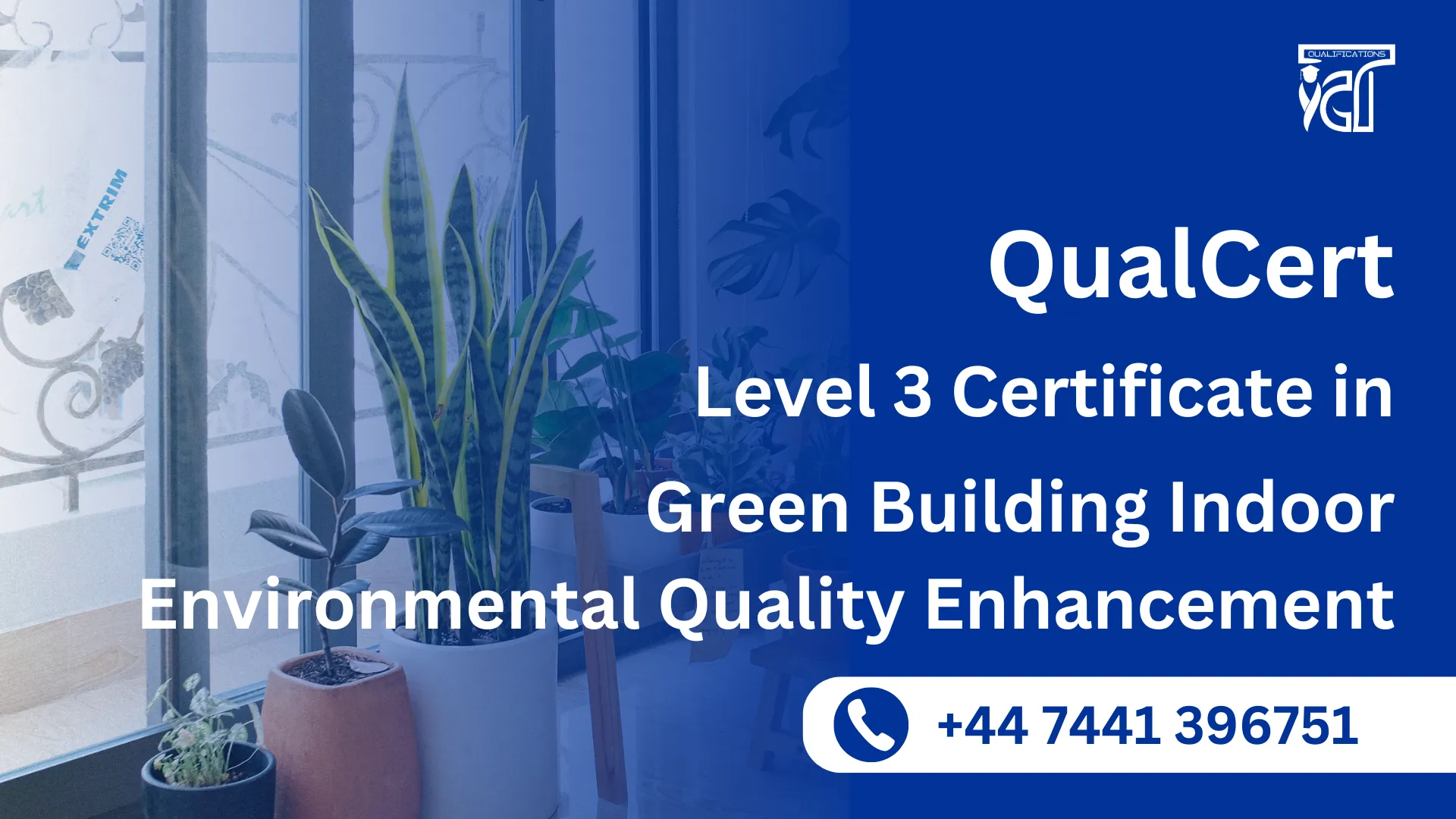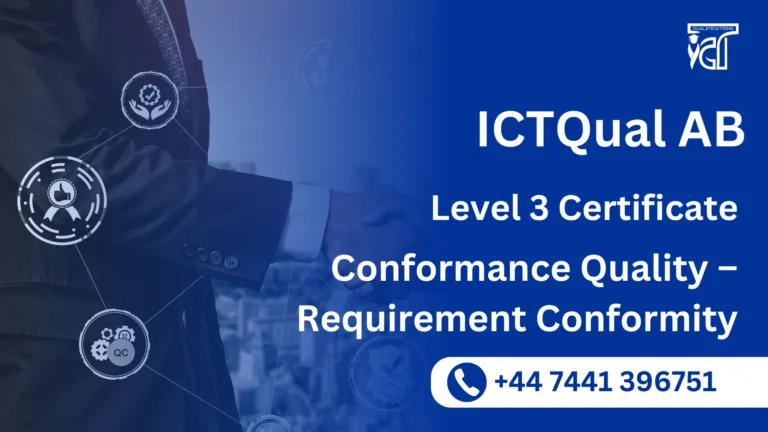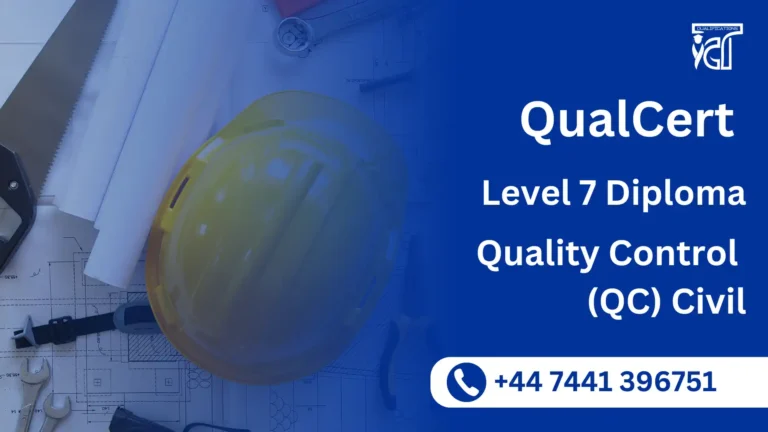In the modern construction and building management landscape, Indoor Environmental Quality (IEQ) is no longer a luxury—it is a necessity. As organizations and developers increasingly focus on human health, comfort, and sustainable performance, the demand for professionals skilled in optimizing indoor environments has grown substantially.
The QualCert Level 3 Certificate in Green Building Indoor Environmental Quality Enhancement is a highly regarded qualification that equips industry professionals with the skills to evaluate, improve, and maintain high-quality indoor environments in line with sustainable building practices.
This specialized qualification is designed to provide a comprehensive understanding of Indoor Environmental Quality and its vital role in green building standards. It focuses on improving air quality, lighting, thermal comfort, and acoustics in built environments—ensuring compliance with regulatory frameworks and boosting occupant health and productivity.
The UK’s Net Zero Strategy and the global shift toward sustainable urban development underscore the importance of healthy, efficient, and adaptable buildings. This qualification supports those goals by fostering expertise in indoor environmental quality—an essential dimension of sustainable development.
The course also supports corporate ESG (Environmental, Social, Governance) goals, helping organizations demonstrate social responsibility and commitment to occupant well-being.
The QualCert Level 3 Certificate in Green Building Indoor Environmental Quality Enhancement is more than just a qualification—it’s a strategic investment in building performance, human health, and environmental responsibility.
By equipping professionals with the knowledge to optimize IEQ, this course empowers individuals and organizations to lead in a future where sustainable, people-centric building design is the new standard.
QualCert Level 3 Certificate in Green Building Indoor Environmental Quality Enhancement
The QualCert Level 3 Certificate in Green Building Indoor environmental quality enhancement offers 20 Credits, requiring a Total Qualification Time (TQT) of 100 hours, including 70 Guided Learning Hours (GLH).This course focuses on improving indoor air quality and occupant health.
| Unit Ref# | Unit Title | Credit | GLH | TQT |
| QC18006-1 | Indoor Air Quality Management | 4 | 14 | 20 |
| QC18006-2 | Thermal Comfort and Ventilation Strategies | 4 | 14 | 20 |
| QC18006-3 | Lighting and Acoustics for Healthier Spaces | 4 | 14 | 20 |
| QC18006-4 | Toxic Material Reduction and VOC Control | 4 | 14 | 20 |
| QC18006-5 | Indoor Environmental Quality Certifications | 4 | 14 | 20 |
GLH (Guided Learning Hours) and TQT (Total Qualification Time) are terms commonly used in vocational qualifications to help define the amount of time a learner is expected to spend on their studies.
1. GLH (Guided Learning Hours)
GLH refers to the number of hours a learner spends being directly taught, supervised, or supported during their course. This includes the time spent in activities such as:
- Classroom instruction
- Practical workshops
- One-on-one tutoring or mentoring sessions
- Online learning sessions with tutor support
In other words, GLH represents the time that learners are actively engaged with their instructors or learning activities.
2. TQT (Total Qualification Time)
TQT represents the total amount of time a learner is expected to invest in completing a qualification, including:
- GLH (Guided Learning Hours): Time spent on direct learning, as explained above.
- Self-Directed Learning: This includes time spent on independent study, research, assignment completion, preparation for exams, and any other work the learner does outside of direct teaching hours.
TQT is a broader measure that includes all the time required to achieve the qualification. It helps learners and employers understand the overall commitment required for the qualification.
Key Differences Between GLH and TQT:
- GLH focuses on direct learning with guidance or supervision.
- TQT includes GLH as well as independent study time and other learning-related activities.
Example:
If a qualification has a TQT of 600 hours and a GLH of 250 hours, it means the learner should spend 250 hours in direct learning (classroom, online, or tutor-led sessions) and 350 hours on independent study or research.
Learning Outcomes of QualCert Level 3 Certificate in Green Building Indoor environmental quality enhancement:
Upon successful completion of the study units in the QualCert Level 3 Certificate in Green Building Indoor Environmental Quality Enhancement, learners will be able to:
Indoor Air Quality Management
- Identify and assess common indoor air pollutants and implement strategies to improve air quality in building environments.
- Apply best practices for ventilation, filtration, and air circulation to enhance indoor air quality and reduce contaminants.
Thermal Comfort and Ventilation Strategies
- Understand the importance of thermal comfort in indoor environments and its effects on occupant well-being.
- Design and implement effective heating, cooling, and ventilation strategies to maintain optimal thermal conditions in green buildings.
Lighting and Acoustics for Healthier Spaces
- Understand the impact of natural and artificial lighting on occupant health, mood, and productivity.
- Apply lighting design principles to create energy-efficient, well-lit indoor environments that support well-being.
- Address acoustic issues in buildings by designing soundproofing strategies that improve noise control and reduce distractions for occupants.
Toxic Material Reduction and VOC Control
- Implement strategies for reducing or eliminating the use of toxic materials and VOCs in construction and finishing products.
- Use low-emission materials and products to improve indoor air quality and ensure compliance with health and safety standards.
Indoor Environmental Quality Certifications
Benefits of the QualCert Level 3 Certificate in Green Building Indoor Environmental Quality Enhancement
1. Enhanced Expertise in Indoor Environmental Quality (IEQ)
Gain advanced knowledge and practical skills to evaluate and improve critical IEQ factors such as air quality, lighting, thermal comfort, and acoustics in green buildings.
2. Improved Health and Well-being Outcomes
Learn how to design and manage indoor spaces that support occupant health, mental well-being, and productivity—essential in workplaces, schools, healthcare, and residential environments.
3. Support for Green Building Certifications
Understand how to meet and exceed requirements for sustainable building standards such as BREEAM, LEED, WELL, and RESET, contributing directly to higher certification scores.
4. Competitive Career Advantage
Boost your professional profile with a recognized qualification in a growing field. This certification is highly regarded by employers, developers, and sustainability consultancies.
5. Regulatory and Compliance Readiness
Stay up to date with health, safety, and environmental regulations related to indoor air quality, ventilation, and occupant comfort in new builds and retrofit projects.
6. Stronger ESG and Sustainability Performance
Help your organization meet Environmental, Social, and Governance (ESG) goals by implementing responsible building practices that prioritize human-centric design.
7. Enhanced Property Value and Market Appeal
Implement IEQ improvements that increase tenant satisfaction, reduce occupancy turnover, and enhance long-term asset value in commercial and residential developments.
8. Energy and Operational Efficiency
Identify opportunities to balance energy use with indoor comfort, using efficient HVAC, lighting, and building control systems that reduce costs while maintaining environmental quality.
9. Flexible, Applied Learning Approach
Benefit from a combination of online learning, expert-led sessions, and practical on-site assessments, allowing you to apply what you learn directly to your professional setting.
10. Contribution to Sustainable Development Goals (SDGs)
Play an active role in advancing global sustainability and public health objectives by creating spaces that support well-being, environmental responsibility, and social equity.
Who Is This Course Best Suited For?
The QualCert Level 3 Certificate in Green Building Indoor Environmental Quality Enhancement is specifically designed for professionals and organizations dedicated to creating healthier, more sustainable indoor environments across the built environment sector.
This course is a perfect fit for individuals who are involved in designing, managing, or improving the quality of indoor spaces and are looking to align their work with leading green building standards and health-focused building strategies.
Best suited for:
- Sustainability Consultants & Green Building Specialists
Seeking to deepen their expertise in IEQ and contribute to LEED, BREEAM, WELL, and RESET certification projects. - Architects, Interior Designers & Building Engineers
Who want to design occupant-centric spaces that prioritize air quality, comfort, lighting, and acoustics. - Facilities & Building Managers
Responsible for maintaining optimal indoor environmental conditions in commercial, institutional, or residential buildings. - Environmental Health & Safety (EHS) Officers
Focused on reducing indoor environmental risks and supporting health and safety compliance. - HVAC, MEP & Building Services Professionals
Who manage heating, cooling, ventilation, and lighting systems and need to optimize their performance for indoor quality and energy efficiency. - Construction Project Managers
Involved in the planning and execution of green building projects who need to understand how IEQ integrates into broader sustainability goals. - Real Estate Developers & Asset Managers
Looking to increase tenant satisfaction, improve building ratings, and protect long-term asset value.
This course is suitable for professionals across all sectors, including healthcare, education, commercial real estate, government facilities, and residential development, where high indoor environmental quality is a strategic priority.
Entry Requirements
Register Now
Qualification Process
Qualification Process for the QualCert Level 3 Certificate in Green Building Indoor Environmental Quality Enhancement
- Self-Assessment:
Begin by evaluating your eligibility to ensure you meet the qualification requirements, including work experience, knowledge, and language proficiency. - Registration:
Complete your registration by submitting the required documents, including a scanned copy of a valid ID, and paying the registration fee. - Induction:
An assessor will conduct an induction to confirm your eligibility for the course and explain the evidence requirements. If you do not meet the criteria, your registration will be canceled, and the fee will be refunded. - Assignmnets & Evidence Submission:
Provide all assignmnets and the necessary evidence based on the assessment criteria outlined in the course. If you are unsure of the required evidence, consult with the assessor for guidance on the type and nature of evidence needed. - Feedback and Revision:
The assessor will review your submitted evidence and provide feedback. Evidence that meets the criteria will be marked as “Criteria Met,” while any gaps will be identified. You will be asked to revise and resubmit if needed. - Competence Evidence:
Submit final evidence demonstrating that all learning outcomes have been met. This evidence will be marked as “Criteria Met” by the assessor once it is satisfactory. - Internal Quality Assurance (IQA):
The Internal Quality Assurance Verifier (IQA) will review your evidence to ensure consistency, quality, and compliance with standards. - External Verification:
The IQA will submit your portfolio to QualCert External Quality Assurance Verifiers (EQA) for final confirmation. The EQA may contact you directly to verify the authenticity of your evidence. - Certification:
Upon successful completion of all checks, QualCert will issue your official certificate, confirming that you have attained the QualCert Level 3 Certificate in Green Building Indoor Environmental Quality Enhancement.







